Gennaro Cuofano's Blog, page 203
May 27, 2020
The Ultimate Directory For B2B Lead Generation

Imagine the case you are selling software that is thought to optimize the cost processes for local shops. How do you start prospecting? Of course, you can jump on the street and go.
Or better yet, find the online database, open and available.
What if one of those databases is just there, but you never noticed? Or perhaps you’ve been using it all along but for a different purpose (like finding a restaurant), but never thought about it as an excellent tool for prospecting?
Google My Business as the world’s greatest business directory
If you need to get going with your prospecting activity, rather than thinking it through too much, just start with simple local searches that can help you filter out the businesses you’re looking for.
For instance, with a simple search like “shop new york” you can access an entire directory of businesses in the area:
[image error]Start searching for simple local things, just like you do in your spare time when you’re looking for a restaurant or else. Then click on “more places” to jump inside the Google My Business entire listing.
[image error]From there you will find a whole list of potential leads, locally, with numbers, opening hours and much more. You also have Google Reviews that help you understand the business and what customers think about it.
[image error]Inside the Google My Business Directory you can find hundreds of potential leads, there, available for your prospecting.
[image error]You can also filter this search per very restricted areas of the city, to go as in-depth as possible with your analysis.
So who said you needed to be a data scientist or to buy the ultimate tool for prospecting, when you have right there, hundreds, if not thousands of potential prospects that you can filter, review and study before prospectintg.
Read next:
Ultimate Business Intelligence ToolBusiness Development GuideSales vs. MarketingBusiness ModelsDigital Business Models
The post The Ultimate Directory For B2B Lead Generation appeared first on FourWeekMBA.
May 26, 2020
Finding the Right Task Management Board Setup for Team Productivity
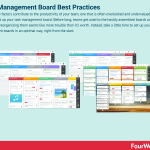
In this article, we invited Raphaela Brandner, Partner Manager at Meister, the company that built incredible productivity tools like MindMeister and MeisterTask (a FourWeekMBA Partner) to explain how to set up task management boards for maximum team productivity!
While many factors contribute to the productivity of your team, one that is often overlooked and undervalued is how you set up your task management board. When investing in new task management software, we are often so eager to get going quickly that we haphazardly set up our projects and tasks. Before long, teams get used to the hastily assembled boards and the thought of reorganizing them seems like more trouble than it’s worth. Instead, take a little time to set up your task management boards in an optimal way, right from the start. Making sure that information is quickly accessible, progress easy to visualize and workflows are streamlined will have a significant impact on your team’s productivity. Here are a few questions to guide you towards your ideal setup.
How Should Projects Be Organized?
The answer to this question can be found by analyzing your business model.
Do regular clients have you on retainer? In this case, it might be best to create a project for each client. That way you can simply add tasks to the project when requests from the client come in. And when asked, you can give a status update by quickly glancing at the board.
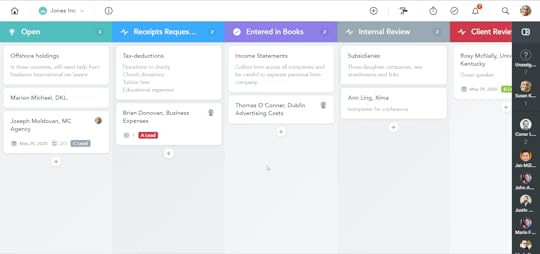
If separating projects by clients scatters tasks into too many locations, try creating projects based on teams. For example, your sales team may have a specific workflow and prefer to see all their clients’ tasks work their way through it. So as not to lose the larger overview of work, connect team boards by moving tasks between them. In MeisterTask, you can do this manually on a case-by-case basis or automate the moving of tasks that are always handed off between the same teams.
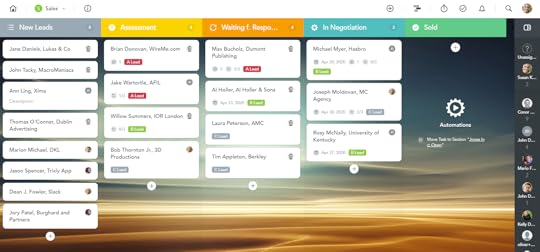
If you work with campaigns and strategies, try creating a new project for each internal program. For example, a marketing team may come up with a new campaign that requires help from several departments. In this case, create a project for the campaign and invite all the relevant employees to the board, regardless of team or department.
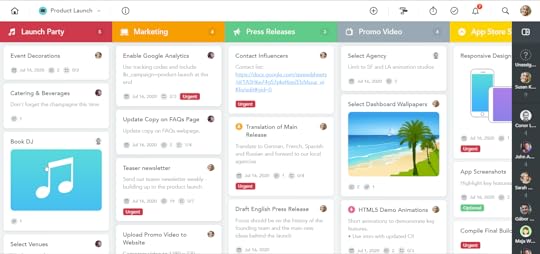
When running a store or restaurant where processes and tasks recur on a regular basis, try creating different projects for different teams, or different shifts.
Once you’ve decided how best to break up the work of your business into projects, start creating boards and inviting the appropriate people to them. Remember that not all project members need to have the same rights and permissions. Setting these correctly — from admin to viewer or commenter — can also reduce errors and add to productivity.
How Can I Optimize Each Board?
First, focus on finding the right workflow. If you’re using a tool like MeisterTask, a standard Kanban workflow of Open, In Progress, Done, will likely already be there. This workflow can loosely suit almost any project, but should absolutely be adapted based on your teams, departments, clients or campaigns.
What is the typical process that tasks go through in each project? Since all projects are customizable, the answer may be different for each one. Here are some common sections to consider when searching for the ideal workflow.
One common way to organize tasks that have yet to be done is to expand the to-do section into several sections. Create a Backlog section so that ideas are not forgotten but also don’t clog your Up Next section. If you’ve made a project for a particular team or department, creating one section per specialty will help everyone see the big picture and notice when someone is overloaded. For example, when working in a development team, consider creating sections for Development, Design and Testing. Does the project need a section called Review so that peers or clients can give feedback?Perhaps you’ve created a team project board but tasks often have dependencies on other teams. In this case, a section called On Hold may be in order. It’s tempting to get rid of the Done section to save space on your board, but leave it there to give you and your team a sense of accomplishment and an easy way to review the past week’s progress.
Workflows are not set in stone. Try to find one that you think will work well for the project and after a few weeks, ask for feedback from the project members. In Kanban-based task management tools such as MeisterTask, sections are easy to change, rename and move, and finding the workflow that makes your team the most productive can include some trial and error.
After you’ve decided on a workflow, read through the user guide of your task management tool to find out how you can use all the features to their full potential. In MeisterTask the features that make the biggest difference in productivity are automations. They increase consistency, save time and reduce errors. Here are just a few examples:
If certain tasks are always assigned to the same person, set up an automation so that tasks put into a particular section are automatically assigned to them.Should tasks be handed over between teams? Create an automation to move tasks from one project’s Done section to another project’s To-Do section. Does your business rely on recurring tasks being executed punctually and correctly? Then create recurring tasks so that you never have to remind yourself or your colleagues to do these repetitive but essential tasks. Do your clients need detailed reports of how much time has been spent on their tasks? Set up sections that act as time trackers for your employees. Then export a report and send it off to the client.
What Makes a Task?
Now that your project boards are correctly organized, workflows are optimized and you’re using all your tool’s features to your advantage, it’s time to take a look at the smallest pieces: tasks. They shouldn’t be too large or they will take too long and progress will stagnate. They also shouldn’t be too small or information will become fragmented and disorganized.
In order to find the right size for your tasks, concentrate on duration. How long should it take for a task to make its way through your workflow? Start with what you would consider ideal and see if it matches reality. If it takes significantly longer for tasks to get through, adjust the size of the tasks, or revisit your workflow.
To make sure that tasks are completed as efficiently and accurately as possible, fill them with as much information as possible. Add assignees, due dates, attachments, and checklists for detailed processes. Having all this information available within just a few clicks will keep your team informed and productive.
Ready to Get Started?
In summary, to find the right task management board to support your team’s productivity, start from the outside, and work your way in. Take time to make sure that projects are divided and organized logically. Then put together individual workflows to match each project. Finally, make sure that tasks are the right size and hold all the information your team needs to get things done. Your first project is waiting to be created — have fun, and remember, you don’t have to get it right the first time!
The post Finding the Right Task Management Board Setup for Team Productivity appeared first on FourWeekMBA.
Market Expansion As A Platform Growth Strategy
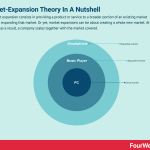
The market expansion consists in providing a product or service to a broader portion of an existing market or perhaps expanding that market. Or yet, market expansions can be about creating a whole new market. At each step, as a result, a company scales together with the market covered.
The mother of the modern market expansion
One of the most successful market expansion of modern business history was achieved by Apple. As the company moved from niche PC maker; it jumped to new markets, until it created a whole new market with its iPhone (what is known as a blue ocean, or at least it used to be so).
[image error]
As Apple created new products, those new products also comprised new technologies, and they were coupled with a different distribution model.
Platforms dominate distribution platforms
When Apple jumped from computers to the iPod, it started to understand that to create a whole new market, a product alone wasn’t enough.
It needed a new way to distribute it and a new platform for enabling a different level of content consumption for consumers.
From there, the iPod, iTunes, and a new distribution model (single songs could be consumed in place of buying entire CDs), a whole new distribution platform was born.
TDM: Technology + Distribution + Monetization
Netflix started as a DVD-rental company. That was the most viable way to start a business that could compete with existing players like Blockbuster. Netflix could have tried to play it bigger.
Netflix had known for years that being a competitive player in the DVD-rental space, was “just the beginning of something else:”
In a Wired article, entitled “The Netflix Effect” from 2002, Reed Hastings, still current Netflix’s CEO, highlighted:
The dream 20 years from now, is to have a global entertainment distribution company that provides a unique channel for film producers and studios.
Thus, Reed Hastings was well aware of the potential of building a platform, yet it knew it took time to achieve the viability of that business model. Netflix could have burned all its capital to enter that market early on.
Yet the first time “streaming” was announced on a Netflix financial statement was in the 2007 annual report, presented in 2008, and by 2009 annual report streaming would be mentioned 88 times (FourWeekMBA analysis). That is when things started to pick up!
[image error]Netflix jumped from a smaller, limited market, to a much larger market, with much less physical constraints. As Netflix jumped from DVD-rental to streaming, it also slowly abated the fulfillment costs related to the delivery of the DVDs. As of 2007, when Netflix revenues were still fully coming from DVD-renting those were over 10% of its revenues (FourWeekMBA Analysis).
And suddenly Netflix jumped from a limited market to an unlimited, digital market, without physical constraints, besides servers’ costs, of course. In 2019 server expenses increased by $18 million as more streaming was served on the platform (FourWeekMBA Analysis). And yet, this model was way more scalable.
[image error]
Other examples that we’re looking at currently, are all around us. Another interesting one is Uber and how – as the company scales – it explores new ways it can achieve its mission, and yet be careful not to take this step too fast, as a false step might certain business death.
Technological platforms mature with the birth of an economic ecosystem around them. Conversely, “business platforms” require technological, distribution, and monetization changes, that combined provide a new way of doing business, and the basis for new business models to emerge.
Logical only in hindsight
While it all makes sense to look at market expansion in this way, it’s important to understand that this is logical only in hindsight. In reality, as companies go through those periods of market changes, they need to adjust.
For instance, as Netflix survived two eras of changed content distribution formats, the survival is all but granted.
And in the next era, where augmented reality might become the next available consumer-platform, the whole TDM framework might change again!
Key takeaways
Market expansion can happen in several formats. It can start by gaining more market shares in an existing market. Or perhaps by expanding the existing market.Or it can happen by taking advantage of a whole new market. As those new markets become available the whole TDM framework (technology, distribution, monetization) makes available new “business platforms” which enable new business models.
Your handcrafted selection:
Business ModelsApple Business ModelNetflix Business ModelUber Business ModelDigital Business Models
The post Market Expansion As A Platform Growth Strategy appeared first on FourWeekMBA.
Is It The End Of The Sales Funnel?
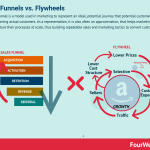
The sales funnel is a model used in marketing to represent an ideal, potential journey that potential customers go through before becoming actual customers. As a representation, it is also often an approximation, that helps marketing and sales teams structure their processes at scale, thus building repeatable sales and marketing tactics to convert customers.
Have sales funnels ever existed in the real world?
The sales funnel is just a representation of reality, as such, it has its own drawbacks, such as:
Assuming most customers reach you through the same path can drive bad marketing campaigns.Assuming the sales cycle is linear, when it’s not, it can create the illusion of understanding fo the customer.Simplifying too much the sales funnel means losing significant opportunities as the service won’t correctly be tailored for more complex shots.
And yet the sales funnel has been a useful tool for marketing and salespeople, as a way to communicate and talk about the way customers get to know a brand. In short, sales funnels introduced a consumer-centered approach to sales, that required marketing people to get aligned with potential customers, thus identifying potential actions to take to unlock the potential of a product.
Therefore, the funnel answers an important function, that of setting a team’s priorities. So even with its evident limitations it can still be a great tool for teams.
A team’s prioritization tool
A classic example of sales funnel is the AARRR funnel, which is a longer version as it relates to subscription-based or SaaS companies for which the journey of the potential customer starts with the awareness of the brand, and it ends with the product referral.
[image error]Venture capitalist, Dave McClure, coined the acronym AARRR which is a simplified model that enables to understand what metrics and channels to look at, at each stage for the users’ path toward becoming customers and referrers of a brand.
This means that the sales funnel helps the whole team understand the kind of actions to undertake for each step of the journey.
For instance, if the marketign team has identified the problem in the acquisition stage, where only a few contacts get to know the brand, then they will know to leverage on certain channels rather than others (for instance, SEO, email marketing, PR or else, rather than working on page conversions).
If instead, the marketing team has identified the problem in the activation stage, then other things will need to be prioritized, such as landing page conversions, or perhaps product features.
The sales funnel has started to morph into something else, as digital business models took over.
Digital platforms
[image error]
As digital platforms have become among the dominant players of this era, they also learned to take advantage of intrinsic features of digital spaces, that before would not be available.
Indeed, platforms can leverage network effects whereas more users join the more the platform becomes valuable for the users coming next. With this sort of logic of consolidation of the business infrastructure, also marketing teams followed suit.
This means that marketing or sales aren’t necessarily made on a one-to-one basis (complex sales and business deals still are) but that the marketing team becomes more like a policy-making lab, where it needs to experiment with all the sorts of ways to build ecosystems rather than just getting the next customers in.
When companies start to prioritize on this sort of strategy, that is when they align their marketing efforts around a platform business model logic.
Customers vs. ecosystems and communities
Many companies that we value today have focused their efforts on building ecosystems made of a few key players coming together. When the ecosystem becomes liquid (players interact freely, with a minimum effort from the central platform) that is when the platform has reached its maximum potential.
Therefore, as this happens marketing becomes the set of activities to help this ecosystem to build up in the first place, and to maintain or grow. In that, the marketer becomes more like a policy-maker or a community-builder.
When a company creates an ecosystem, it becomes possible to convert its business model, relatively quickly. See how Airbnb is during pandemic times, trying to convert from physical, and local experience, to digital experiences.
[image error]Airbnb is stretching its business model and experimenting with new formats like online experiences to transition toward fully digital experiences.
Flywheels and momentum
[image error]The Amazon Flywheel or Amazon Virtuous Cycle is a strategy that leverages on customer experience to drive traffic to the platform and third-party sellers. That improves the selections of goods, and Amazon further improves its cost structure so it can decrease prices which spins the flywheel.
When Jeff Bezos scratched on a piece of paper what would become the Amazon Flywheel (at Amazon they called it virtuous cycle), this was a way to align the marketing effort with the fact that Amazon was transitioning at all effect to consolidate its e-commerce platform (so enable third-party stores to sell on Amazon, which as a side-effect brought to the birth of another platform: Amazon AWS).
[image error]
Other examples, like the Etsy business model also follow the same logic. As the flywheel model gains momentum, you don’t start from scratch, but when the accumulated momentum reaches a critical mass as a side effect an entrepreneurial ecosystem forms, which becomes the most important asset for the platform business model.
Therefore, marketing at this level becomes a completely different game.
[image error]
Other examples, like the Uber business model, also combine platform (both business and technical) and marketing efforts to build momentum. The argument from a company like Uber is that when the ecosystem becomes liquid, this creates s market which is much larger than the previous:
[image error]
At each expansion stage, the next market created is much bigger than the previous, and as a result the platform scales with it. By scaling with the market, the whole context changes, and the whole company changes with it, thus requiring a whole new business model.
Key takeaways
Sales funnels are useful tools that enable sales and marketing teams to prioritize their work. While sales funnels are useful for digital and platform business models, the flywheel can be more effective. Indeed a flywheel marketing model can help build an ecosystem that becomes the main asset of the platform.
Read next:
Business ModelsPirate FunnelAmazon FlywheelUber Flywheel Etsy Business ModelDigital Business Models
The post Is It The End Of The Sales Funnel? appeared first on FourWeekMBA.
May 23, 2020
Vision Statement Examples From The Most Valuable Brands

Amazon’s vision is “to be Earth’s most customer-centric company, where customers can find and discover anything they might want to buy online, and endeavors to offer its customers the lowest possible prices.”Apple’s vision is “we believe that we are on the face of the earth to make great products and that’s not changing.”Coca-Cola’s vision and mission are to “craft the brands and choice of drinks that people love, to refresh them in body & spirit. And done in ways that create a more sustainable business and better-shared future that makes a difference in people’s lives, communities, and our planet.”Google’s vision is “to provide an important service to the world-instantly delivering relevant information on virtually any topic.”Microsoft’s vision is “to empower every person and every organization on the planet to achieve more.”Netflix’s core vision is that of “improving its members’ experience by expanding the streaming content with a focus on a programming mix of content that delights members and attracts new members.”Starbucks’ vision is to “treat people like family, and they will be loyal and give their all.”Tesla’s vision is to “create the most compelling car company of the 21st century by driving the world’s transition to electric vehicles.”WeWork vision is that of providing a better day at work for less. And its mission is to elevate the world’s consciousness.
Amazon Vision Statement
Amazon‘s vision is “to be Earth’s most customer-centric company, where customers can find and discover anything they might want to buy online, and endeavors to offer its customers the lowest possible prices.”
[image error]
Read: Amazon Vision Statement
Apple Mission Statement
In a manifesto dated 2009 Tim Cook set the vision specified as “We believe that we are on the face of the earth to make great products and that’s not changing.”
[image error]
Read: Apple Vision Statement
Coca-Cola Vision Statement
Coca-Cola’s vision and mission are to “craft the brands and choice of drinks that people love, to refresh them in body & spirit. And done in ways that create a more sustainable business and better-shared future that makes a difference in people’s lives, communities, and our planet.”
[image error]
Read: Coca-Cola Vision Statement
Google Mission Statement
Google’s vision is “to provide an important service to the world-instantly delivering relevant information on virtually any topic.”
[image error]
Read: Google’s Vision Statement
Microsoft Vision Statement
Microsoft’s vision is “to empower every person and every organization on the planet to achieve more.”
[image error]
Read: Microsoft Vision Statement
Netflix Vision Statement
Netflix‘s core vision is that of “improving its members’ experience by expanding the streaming content with a focus on a programming mix of content that delights members and attracts new members.”
[image error]
Read: Netflix Vision Statement
Starbucks Vision Statement
Starbucks vision is to “treat people like family, and they will be loyal and give their all.”
[image error]
Read: Starbucks Vision Statement
Tesla Vision Statement
Tesla’s vision is to “create the most compelling car company of the 21st century by driving the world’s transition to electric vehicles.”
[image error]
Read: Tesla Vision Statement
Walmart Vision Statement
Walmart’s vision is to “make every day easier for busy families.” Walmart defines “busy families” as the bull’s eye of its business strategy.
[image error]
Read: Walmart Vision Statement
WeWork Vision Statement
WeWork vision is that of providing a better day at work for less. And its mission is to elevate the world’s consciousness.
[image error]
Read: WeWork Vision Statement
Read next:
Amazon Vision StatementApple Vision StatementGoogle Vision StatementWalmart Vision StatementNetflix Vision StatementNike Vision StatementTesla Vision Statement
Other resources:
53 Successful Types of Business Models You Need to KnowBusiness Strategy: Definition, Examples, And Case StudiesBusiness Model Canvas ExplainedBlitzscaling Business Model Innovation Canvas In A NutshellWhat Is a Value Proposition? Value Proposition Canvas ExplainedWhat Is a Lean Startup Canvas? Lean Startup Canvas ExplainedWhat Is Market Segmentation? the Ultimate Guide to Market SegmentationMarketing Strategy: Definition, Types, And Examples
The post Vision Statement Examples From The Most Valuable Brands appeared first on FourWeekMBA.
Tesla Mission Statement and Vision Statement In A Nutshell
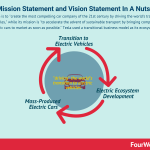
Tesla’s vision is to “create the most compelling car company of the 21st century by driving the world’s transition to electric vehicles,” while its mission is “to accelerate the advent of sustainable transport by bringing compelling mass-market electric cars to market as soon as possible.” Tesla used a transitional business model as its ecosystem grows.
In an official presentation of 2011, Tesla highlighted its vision as:
Create the most compelling car company of the 21st century by driving the world’s transition to electric vehicles
While as highlighted by Elon Musk on Tesla’s blog its mission was:
to accelerate the advent of sustainable transport by bringing compelling mass-market electric cars to market as soon as possible.
To understand what it means we need to look at Tesla’s history, and how it developed.
Tesla was founded in 2003 by a group of engineers. The central idea was to prove that electric cars could be as good, if not better than gasoline alternatives.
As Elon Musk took over as a CEO, he started to roll out a strategy where Tesla could have an entry price competitive with other cars in the market. That is why the first car Tesla launched was a sport’s car, as its pricing was in line with the market.
Indeed, as highlighted by Elon Musk, back in 2013:
Our first product was going to be expensive no matter what it looked like, so we decided to build a sports car, as that seemed like it had the best chance of being competitive with its gasoline alternatives.
Therefore, as go-to-market and entry strategy Tesla used a higher-priced segment of the market, in seemingly sharp contrast with its mission. Yet his was a transitional business model that enabled Tesla to be viable in the short-term and yet achieve its mission in the long-run.
That’s because, in order to become fully viable as a business model, Tesla needed to create an entire ecosystem, also made of energy solutions that could enable electric cars to become competitive in terms of convenience (meant as the ability to charge anywhere) in respect to gasoline vehicles.
Therefore, as Tesla rolls out its business model, by enabling this ecosystem to grow, year over year, the company can enter larger and larger segments of the markets by offering lower-priced options, that might make it possible for Tesla’s vehicles to achieve mass adoption.
[image error]
Read next: Tesla Business Model, Tesla SWOT Analysis
Other resources:
53 Successful Types of Business Models You Need to KnowThe Complete Guide To Business DevelopmentBusiness Strategy: Definition, Examples, And Case StudiesBlitzscaling Business Model Innovation Canvas In A NutshellWhat Is Market Segmentation? the Ultimate Guide to Market SegmentationMarketing Strategy: Definition, Types, And ExamplesMarketing vs. Sales: How to Use Sales Processes to Grow Your BusinessHow To Write A Mission Statement
References:
Tesla About PageTesla BlogTesla Earnings Release 2011
The post Tesla Mission Statement and Vision Statement In A Nutshell appeared first on FourWeekMBA.
Netflix Mission Statement and Vision Statement In A Nutshell
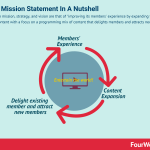
Netflix’s core mission, strategy, and vision are that of “improving its members’ experience by expanding the streaming content with a focus on a programming mix of content that delights members and attracts new members.”
Netflix core strategy and mission
As Netflix highlighted in its 2019 annual report:
Our core strategy is to grow our streaming membership business globally within the parameters of our operating margin target. We are continuously improving our members’ experience by expanding our streaming content with a focus on a programming mix of content that delights our members and attracts new members. In addition, we are continuously enhancing our user interface and extending our streaming service to more internet-connected screens. Our members can download a selection of titles for offline viewing.
[image error]
Netflix is among the most popular streaming platforms, with a subscription-based business model. The brand, platform, and content are strengths.
The volatility of content licensing and production used to be weaknesses, yet Netflix invested substantial resources in developing its own content:
[image error]
The Netflix content, and the way it delivered it became so addicting to members that a new term would be made popular by how Netflix distributed the content all in batches, without pacing it: binge-watching.
Indeed, that is the practice of watching TV series all at once. In a speech at the Edinburgh Television Festival in 2013, Kevin Spacey said: “If they want to binge then we should let them binge.” This new content format would be popularized by Netflix, launching its TV series all at once.
[image error]
Netflix makes money with three simple plans:
Basic, Standard, And premium,
Those subscriptions give access to stream series, movies, and shows. The company is profitable, yet it runs on negative cash flows due to upfront cash paid for content licensing and original content production.
[image error]
Netflix is a profitable company. It generated over $1.2 billion in 2018, a 116% increase compared to 2017, primarily driven by substantial growth in paid memberships.
However, Netflix has negative cash flows as it invests massively on content license agreements and original content.
Netflix Values
As highlighted, on the Netflix career site its core values are:
JudgmentCommunicationCuriosityCouragePassionSelflessnessInnovationInclusionIntegrityImpact
This translates in five core actions:
Encourage independent decision-making by employeesShare information openly, broadly, and deliberatelyAre extraordinarily candid with each otherKeep only our highly effective peopleAvoid rules
Highly Aligned, Loosely Coupled
We spend lots of time debating strategy together, and then trust each other to execute on tactics without prior approvals. Often, two groups working on the same goals won’t know of, or have approval over, their peer activities. If, later, the activities don’t seem right, we have a candid discussion. We may find that the strategy was too vague or the tactics were not aligned with the agreed strategy. And we discuss generally how we can do better in the future.
The motto “highly aligned, loosely coupled” is in line with Netflix way to keep a startup mindset even though the company has scaled at the size of a tech giant.
Read Next: Netflix Business Model, Netflix SWOT, Netflix Content Strategy, Netflix Profitability, Mission Statement Examples
Other resources:
53 Successful Types of Business Models You Need to KnowThe Complete Guide To Business DevelopmentBusiness Strategy: Definition, Examples, And Case StudiesBlitzscaling Business Model Innovation Canvas In A NutshellWhat Is Market Segmentation? the Ultimate Guide to Market SegmentationMarketing Strategy: Definition, Types, And ExamplesMarketing vs. Sales: How to Use Sales Processes to Grow Your BusinessHow To Write A Mission Statement
References:
Netflix CareersNetflix 10K Report
The post Netflix Mission Statement and Vision Statement In A Nutshell appeared first on FourWeekMBA.
Coca-Cola Mission Statement and Vision Statement In A Nutshell

Coca-Cola’s Purpose is to “refresh the world. make a difference.” Its vision and mission are to “craft the brands and choice of drinks that people love, to refresh them in body & spirit. And done in ways that create a more sustainable business and better-shared future that makes a difference in people’s lives, communities, and our planet.”
Coca-Cola Purpose
Refresh the world. Make a difference.
In the 2019 letter to James Quincey, CEO of Coca-Cola highlighted:
Our company started in 1886 and grew with a purpose to refresh the world. This became refreshment not just in a physical sense but also in spirit, and not just to refresh people but also to communities.
Since then, we’ve grown enormously as a business, spreading joy, optimism, and happiness. We’ve made a difference with our brands, beliefs, and values. Much has changed in the last 133 years. Today, we are a total beverage company.
We’re present in almost every beverage category, and we have more than 500 brands. Over 700,000 people in our system help deliver those brands to customers and consumers every day.
But, looking forward, the world faces myriad new challenges, and so does our business.
We have to ask ourselves: Is the original purpose of the company still valid? Should it evolve as the world evolves?
Coca-Cola Vision
Our vision is to craft the brands and choice of drinks that people love, to refresh them in body & spirit. And done in ways that create a more sustainable business and better-shared future that makes a difference in people’s lives, communities and our planet.
As clear from its vision, there are three core values that we can extract from Coca-Cola’s vision:
Create loved brands: For that Coca-Cola means 1. Passion for people and their lives 2. Cutting-edge excellence in ingredients, innovation, design, and marketing 3. Investing for leadership across categories in brands that consumers love 4. Acting globally and locally 5. Building powerful partnerships to go to marketDone sustainably: 1. Start with facts, based in science 2. Grow our business, reduce sugar and provide consumer choices 3. Make packaging part of a circular economy, with a focus on 100% collection 4. • Be water balanced, improving water security where needed most 5. Reduce carbon footprint 6. Source more sustainably and ethicallyBetter shared future: 1. Invest in employees’ personal growth and talent for today and future 2. Empower our people, provide access to equal opportunities, and become more inclusive 3. Create value for customers big and small 4. Support local communities to achieve more, including in times of need 5. Deliver returns to shareowners. Our investors range from major institutions to millions of individuals
Coca-Cola Mission
[image error]
Coca-Cola is among the most valuable consumer brand, and it’s easy to think of it as a single-product company. Yet, Coca-Cola has a set of brands, system and processes engineered in the last decades to make it the food company we know today.
[image error]
Coca-Cola is very good at marketing itself. The company runs successful marketing campaigns with the aim to associate positive emotions with its brands. Coca-Cola’s target is to reinforce its distribution and sales as it becomes a product tied to the daily lives of millions of people.
[image error]
Read next: Coca-Cola Business Model, Coca-Cola vs. PepsiCo, Mission Statement Examples
Other resources:
50 Successful Business ModelsDigital Business Models
The post Coca-Cola Mission Statement and Vision Statement In A Nutshell appeared first on FourWeekMBA.
How to Build a Successful Amazon FBA Business
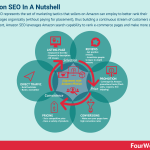
In this article, we’ll see how you can build an Amazon FBA business, from scratch. Let’s start from the basics.
What is an Amazon FBA business?
Being an Amazon FBA seller means that you are selling products on Amazon while letting Amazon take care of all your shipping, storage, and handling needs. It is an extremely attractive business model due to the fact that you don’t have any fixed overhead costs.
Learning how to start an Amazon business is not difficult at all, but mastering the art of selling on Amazon is a bit more of a challenge. You don’t have to hire people or rent warehouses; you can do it all from the comfort of your computer while Amazon does all the heavy lifting for you. You do have to pay Amazon per every product that is stored and sold. However, it’s much cheaper than it would cost you to do on your own. An additional benefit to this business model is that you can pretty much scale it infinitely.
The benefits of this business model are that it doesn’t take much time to run it, and you can start with a relatively low investment. However, it does take hard work to make a lot of money as an Amazon seller. This business model poses many challenges, as with any other business. You need to sell something that people want to buy and find a way to let people know you are selling it. The main benefit is that you can basically focus on that while all other aspects of the business are handled by Amazon‘s logistics and systems. So, what do you have to do in order to sell on Amazon, and to do it well?
Product research
The first thing you need to figure out is what you are going to sell. This is not exactly easy to figure out. On the bright side, you can basically sell anything. In this day and age, you can simply go online to find suppliers that can make any product. On the other hand, you need to do some research and find out what is selling on Amazon. Of course, it’s not just about what is selling. It’s also a matter of things like:
How much competition are you going to have if you sell a certain product?What are your margins going to be?How much will it cost to manufacture and ship it? Can you customize the product?How many can you expect to sell?
Answering these questions is never easy, and finding the right product to start with is extremely important. Picking the wrong one can doom your business before it even starts. Of course, there are no guarantees that you can find a 100% fail proof product, but you can do your best to minimize your risk of failure.
This is why most sellers use market intelligence software like AMZScout in order to get as much information as possible, as well as to quickly get many viable product ideas . Of course, you can do the research without the software- it would probably just take longer, and you would be relying on luck and personal hunches more than you should. This is not the smartest business practice, especially if there are ways of working around it.
Finding a supplier and getting samples
Once you find your first product idea, or several ideas, the next step is to find someone to make it for you. You can find suppliers very efficiently on platforms like Alibaba.com, and during this stage of building your Amazon business, you should try and get the following information:
The manufacturing price per unit, based on different order quantities The same prices, including shipping, to your market country The supplier’s ability to customize the product and packaging to the way you need themOrdering samples (or prototypes) of your first product and stress testing them
After you go through this, you will have your product in your hands, and if all goes well, you can make your first order. You should also take the opportunity to take product photos, which will be necessary for the next step. Before ordering your prototype you should also come up with a brand name, and make sure you register a domain for that brand name. This is not something that Amazon requires you to do, but it will be something that you will need to do as your business grows.
Creating your listing on Amazon
The most optimal time to start working on your listing is while you are waiting for your first shipment of items to arrive. The listing has several components:
Listing imagesProduct titleBullet pointsProduct DescriptionBack end Keywords
There are rules when it comes to each one of these components. All of the components, except for the images, are subject to Amazon‘s own SEO, which is guided by the A9 algorithm.

This where keywords play a huge role. You need to do keyword research in order to include the most relevant and searched for keywords that are related to your product. This will eventually get you higher in those searches. There is no way around doing this without software.
This is why tools such as AMZScout’s Keyword Explorer and Keyword tracker are so essential in this stage. You need to identify the right keywords for your product, and find a way to include them in your listing copy. You need to present them well to your potential shoppers, and you need the Algorithm to pick them up and index you on the searches.
When it comes to images, you only need to do your first image- called the title image- on a white background where the product covers the majority of it. You can have more freedom with the rest, but focus on highlighting the features of your product. The images have no bearing on the SEO. When it comes to your listing you can always find ways to adjust it and find new keywords. However, it’s important that you have the best setup you possibly can from the start, so that you can hit the ground running.
Launching your product and Amazon Advertising
Launching a product on Amazon includes a lot of different elements. The most important one is Amazon sponsored products, or Amazon Pay Per Click advertising. Amazon has its own advertising system, and arguably it’s the most potent and cost-effective one you can find anywhere on the internet.
After all, unlike places such as social media sites, Amazon is a place where people are coming with money in their hands with the intent of buying something. This is once again a place where keywords come into play. In order to get your product as much exposure as possible over time, you need to advertise the keywords that are in your listing. The more products you sell as a result of someone typing in a keyword in a search bar, the higher you get in those searches.
At first, all of the sales you get will be through Amazon PPC, until you get high enough in the searches for your listing to show up organically. This is why PPC is instrumental to any product launch, and it doesn’t ever stop being relevant. Apart from PPC, you can also try social media promotion with discounts and giveaways. Those methods are a little less cost-effective, but they can help get your product out there. However, PPC is a must. The rest is optional.
Conclusion
After you launch your product, you will have a living and breathing business that will need constant tending. An Amazon business is a very time efficient business to run. However, just because it can be run with only a few hours of time per week, it doesn’t mean that it will run itself.
There will always be opportunities to better advertise, optimize, and position your product, as well as add new products. Growing, adapting, and finding new opportunities is what selling on Amazon is all about. In fact, just deciding to become an Amazon seller is acting exactly in accordance with these principles.
Read more about Amazon:
Amazon Business ModelWhat Is the Receivables Turnover Ratio? How Amazon Receivables Management Helps Its Explosive GrowthAmazon Case Study: Why from Product to Subscription You Need to “Swallow the Fish”What Is Cash Conversion Cycle? Amazon Cash Machine Business Model ExplainedWhy Is AWS so Important for Amazon Future Business Growth?Amazon Flywheel: Amazon Virtuous Cycle In A NutshellAmazon Value Proposition In A NutshellWhy Amazon Is Doubling Down On AWSThe Economics Of The Amazon Seller Business In A NutshellHow Much Is Amazon Advertising Business Worth?What Is the Cost per First Stream Metric? Amazon Prime Video Revenue Model ExplainedJeff Bezos Teaches You When Judgment Is Better Than Math And DataAlibaba vs. Amazon Compared in a Single InfographicAmazon Mission Statement and Vision Statement In A NutshellGoogle Vs. Amazon: The Latest Move For World DominationGoogle Q1 Profit 2020: Mobile Traffic, Youtube Ads, Youtube Memberships, And Cloud Saved The Day (For Now)Third-Party Sellers And Amazon’s Platform-First Business, Will It Last?
The post How to Build a Successful Amazon FBA Business appeared first on FourWeekMBA.
May 22, 2020
Business Model Canvas Examples
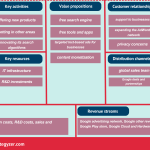
The business model canvas can be used as a tool to dissect, understand others’ companies’ business models and how they are positioned in the marketplace.
In this article, we’ll look at the Google business model canvas. Keep in mind that the business model canvas is just one of the frameworks you can use to build, design or assess a business model.
Also, a business model canvas will capture where a company is or where it will want to be in the future. Thus, we’ll look at where Google business is at the time of this writing.
While a business model does create a long-term competitive advantage, being able to innovate it over time is critical. If Google itself doesn’t want to be disrupted, it will need to evolve its business model.
This might imply a complete change in a few years on a few things that comprise its business model according to the business model canvas like key partners, distribution channels and customer relationships.
While the vision of a company might stay the same, other things like value proposition might change substantially.
Google key partners
Each day billions of people get online, and they “google things up.” For many of those people, Google is de facto the web. Yet it hasn’t always been this way. There was a time, back in the late 1990s when the web was called AOL.
Indeed, probably more than half of the traffic on the internet went through this portal. When Google launched, while it had figured a great product and search engine, it didn’t have a business model yet.
For instance, by reviewing some of the thoughts of Google founders Page and Brin, it seems clear that they thought advertising wasn’t well suited for a search engine:
[image error]
In the paper, they pointed out their “mixed feelings” about the advertising business model. As they believed any search engine based on the premise of advertising in a way went against its primary mission.
However, over time Google figured a way to show advertising in a way that would not affect user experience.
Since the beginning traffic going through Google‘s digital properties (its search pages) has been a critical ingredient for its long term success.
That is also why initially Google made a deal with AOL to be featured as a primary search engine on its portal, which gave it massive visibility.
AOL on its hand was offered such a good deal, and it also saw search as a secondary feature, that it couldn’t say no to Google. Therefore, while we give for granted the billions of queries – that each day – go through Google.
We miss the fact that Google had to build up a vast distribution network that each day guarantees it this traffic. This isn’t a simple network, but rather a massive infrastructure worth billions of dollars each year.
How does this infrastructure look like? There are a few elements:
Partnership agreements
One example is the multi-billion dollar deal with Apple to have Google featured as a default search engine on Safari. Traffic doesn’t come from thin air; it comes from physical devices.
As the web has shifted from desktop to mobile devices, Google has developed its distribution strategy (for instance via Google Chrome).
However, a vast array of devices (take iPhones or iPads) are operated by Apple IOS operating system and its internet browser (Safari). To be featured on those devices Google pays a substantial amount of money.
Open handset alliance
As pointed out above mobile users have grown massively in the last decade. This implies that whoever takes hold of the mobile content consumption can build a sustainable business model for years to come.
With other 84 technology and mobile companies, Google forged the Open Handset Alliance. In fact, in 2005, Google acquired Android (what would become the prevailing operating system for mobile).
Just after a few months from the launch of the iPhone by Steve Jobs, Google announced its Open Handset Alliance. The aim was to build “the first truly open and comprehensive platform for mobile devices.”
The business model behind the Open Handset Alliance is a simple one. Google provides its free of charge, the operating system for mobile devices, Android, and in exchange for many apps, like Google Play and Google Chrome come pre-installed.
AdSense network
It wasn’t just traffic the critical ingredient for Google success. It could offer relevant and high-quality content compared to any other portal, or search engine.
On the one hand, Google had figured out how to offer relevant ads by introducing AdWords with its quality score. On the other hand, it needed to balance that with high-quality organic content from the web.
While Google did offer that by indexing the entire visible web, it managed to improve quite a lot when it offered to any publishers (independently from their brand) the possibility to monetize their content via the AdSense network.
Comprising millions of websites around the world; those websites allow Google to tap into their sites to place banners from businesses that want to advertise their services. Google shares the advertising revenues generated from those banners with these publishers.
Webmasters
A great payoff of Google is its ability to send qualified traffic to any site, based on searches people perform. For instance, if I search for “car insurance” on Google, I will find a few text-based ads on top of its search results.
At the same time, I’ll also find may other organic results, that didn’t pay a dime to be featured there. This is possible because Google has a massive index of the web, and if that content is relevant, it will be featured on Google‘s first page.
Being on Google‘s first page might turn in substantial income for those sites able to rank through it. In particular, web owners can submit their website via Google Search Console (a platform to monitor the indexing of a site) to control how Google sees the site.
This allows publishers – independently from being part of Google AdSense – to “control” their rankings vis Google organic search engine. Millions of webmasters each day help Google index their content, and make it easier for the search engine to keep a qualified index of the web!
Google key activities
Google mission is to “organize the world’s information and make it universally accessible and useful.”
This bold vision requires Google keeps innovating in the search industry, while it also looks forward to new ways the web is developing. From voice search, visual search, machine learning and more.
Google needs to invest first of all in a robust and secure infrastructure that makes it possible for the company to handle each day billions of queries. This implies a few key activities:
At a basic level, Google has to keep innovating its search algorithms. This alone requires substantial investments.As voice search is growing it is critical that Google keeps innovating by also offering new products. For instance, Google launched its new voice devices, such as Google Home, which compete against other tech giants, like Amazon’s Alexa and Cortana.Google still generated most of its revenues from advertising. A business model based on a single source of revenue might not be sustainable in the long run. That is also why Google is investing resources in betting in other areas that might lead to the next innovation.
Google’s value proposition
For a tech giant like Google, which has a sophisticated business model, based on a hidden revenue generation, there isn’t a single value proposition.
Instead, several value propositions will serve the purpose of keeping key partnerships that allowed Google to scale up and let it today to maintain its market dominance. Thus, if I had to summarize the fundamental value propositions those would be:
The value proposition for billion of users
Free search engine for billions of users around the world. This is how Google managed to grow quickly. A great, reliable and free service that allowed users anywhere in the world to find the information they needed, fast.
Tools and productivity apps
Besides its free search engine, Google also offers a set of free tools and apps (to mention a few: Gmail, Google Analytics, Blogger, Google Books, Google Chrome and many others). Those free tools are among the most used in the business world.
Google advertising business
The core of the Google business model is advertising, focused on targeted text-based ads for businesses offered via the AdSense network.
Before Google existed,d there was no way for marketers to know in detail all the conversion metrics of their ads. While Overture was the first in offering CPC advertising, Google managed to scale it up at massive levels.
Google AdSense
Before Google disrupted the advertising world and took over the digital advertising market, a few established publishers could make money via advertising.
With its AdSense network, Google also allowed small publishers to monetize their content.
In a way, it was a democratization of the digital advertising market, where anyone with the content that got the most eyeballs and attention could monetize on it, independently from its brand.
Google AdSense is still an essential element of Google value proposition.
Google customer relationships
The cash cow for Google is its AdWords network, made of a growing number of businesses looking to sponsor their products and services. That implies two things.
First, Google needs to keep offering targeted ads that allow those businesses to generate leads. Second, Google is as worth as much as the qualified traffic it can generate.
This implies that Google needs to keep focusing on making sure that users go back to its search results pages. Indeed, even if users do not pay for Google search results, they are the products.
As any attention merchant, Google is selling back their attention. That means Google will need:
Salesforce able to support AdWords (now Google Ads) businesses
Offer the proper support to businesses part of the AdWords network requires a substantial investment in business development people able to expand the list of companies that join Google’s advertising network. This implies local initiatives, training, and support to those businesses.
Privacy
Companies like DuckDuckGo have built their business on Google weakness in terms of privacy. If those concerns are not addressed Google might be losing an increasing chunk of users, willing to switch because of privacy concerns
Google customer segments
In terms of value creation, with its massive business model, Google has several “customers” not intended only to businesses paying Google for service but also those people or organization that contribute to Google financial success. In that respect we have:
Free internet users
Internet users around the globe. Even though Google is a free service, Google’s users are among the most important “customers.” If Google lost them, there would be no business at all.
Agencies, marketers, and businesses
Those who are bringing big bucks to Google are agencies, marketers and businesses part of its Ad Network. They are driven by the fact that Google is an incredible source of targeted, and qualified traffic.
Publishers
AdSense Network Members allow Google to offer targeted ads on its web properties.
It is important that Google keeps offering those publishers enough incentives to keep monetizing their content via the AdSense platform.
I treat them here as “customers” because Google still needs to “convince” them to use the AdSense platform to monetize their content.
Google key resources
Even though Google is a digital business, that might make you think the company has no real assets. This is far from the truth.
As of 2017, Google had $7.2 billion of contractual obligations, primarily related to data center operations, digital media content licensing, and purchases of inventory.
This implies a few key resources:
The most basic thing of any site with a large number of traffic needs is a massive server infrastructure. Back in the late 1990s when Google was still in the very initial stage at Stanford, it brought down its internet connection several times, by causing several outages. That allowed its founders to understand they needed to build up a solid infrastructure on top of their search tool. Today Google has a massive IT infrastructure made of various data centers around the world.Another element to allow Google to stay on top of his game is to keep innovating in the search industry. Maintaining, updating and innovating Google’s algorithms isn’t inexpensive. Indeed, in 2017 Google spent over $16.6 billion in R&D, which represented 15% of its total revenues.
Google distribution channel
I believe that one of the vital ingredients to Google’s success was its distribution strategy, since its first few years of operations. That is also why Google relies on:
global sales team which uses business development to keep growing Google operationsGoogle deals and partnerships that bring it on billions of devices in the world
I’ve extensively covered Google distribution strategy below:
The Deal That Made Google The Tech Giant We Know TodayWhy Google Success Was The Fruit Of Its Business Distribution Strategy
Google cost structure
With its over $110 billion in revenues in 2017, Google reported a $12.6 billion in net profits. This implies a few critical items in its income statements:
traffic acquisition costs is a crucial metric to assess Google ability to generate value over the years:
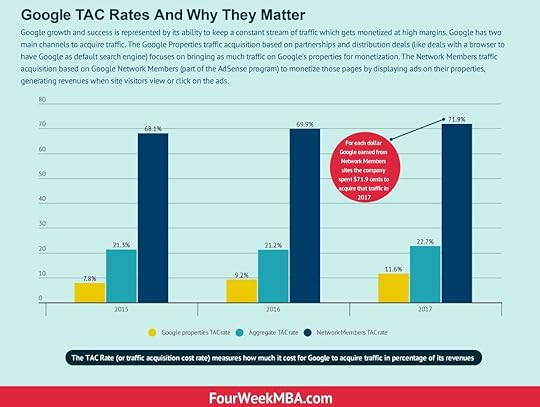 TAC stands for traffic acquisition costs, and that is the rate to which Google has to spend resources on the percentage of its revenues to acquire traffic. Indeed, the TAC Rate shows Google’s percentage of revenues spent toward acquiring traffic toward its pages, and it points out the traffic Google acquires from its network members. In 2017 Google recorded a TAC rate on Network Members of 71.9% while the Google Properties TAX Rate was 11.6%.
TAC stands for traffic acquisition costs, and that is the rate to which Google has to spend resources on the percentage of its revenues to acquire traffic. Indeed, the TAC Rate shows Google’s percentage of revenues spent toward acquiring traffic toward its pages, and it points out the traffic Google acquires from its network members. In 2017 Google recorded a TAC rate on Network Members of 71.9% while the Google Properties TAX Rate was 11.6%.As we’ve seen R&D costs represented 15% of its total revenues, or $16.6 billionSales and marketing represented 11.6% of its revenues or almost $13 billionDatacenters costs also represent another good chunk of Google cost of revenues
Google revenue streams
Google business model can be broken down into three main lines:
Google advertising network Google other revenues (consisting of Apps, in-app purchases, and digital content in the Google Play Store; Google Cloud offerings and Hardware) Google other bets
Other business models examples
Amazon Business ModelMicrosoft Business ModelNetflix Business Model LinkedIn Business ModelGoogle Business ModelFacebook Business ModelSpotify Business ModelUber Business ModelLyft Business Model
The post Business Model Canvas Examples appeared first on FourWeekMBA.



